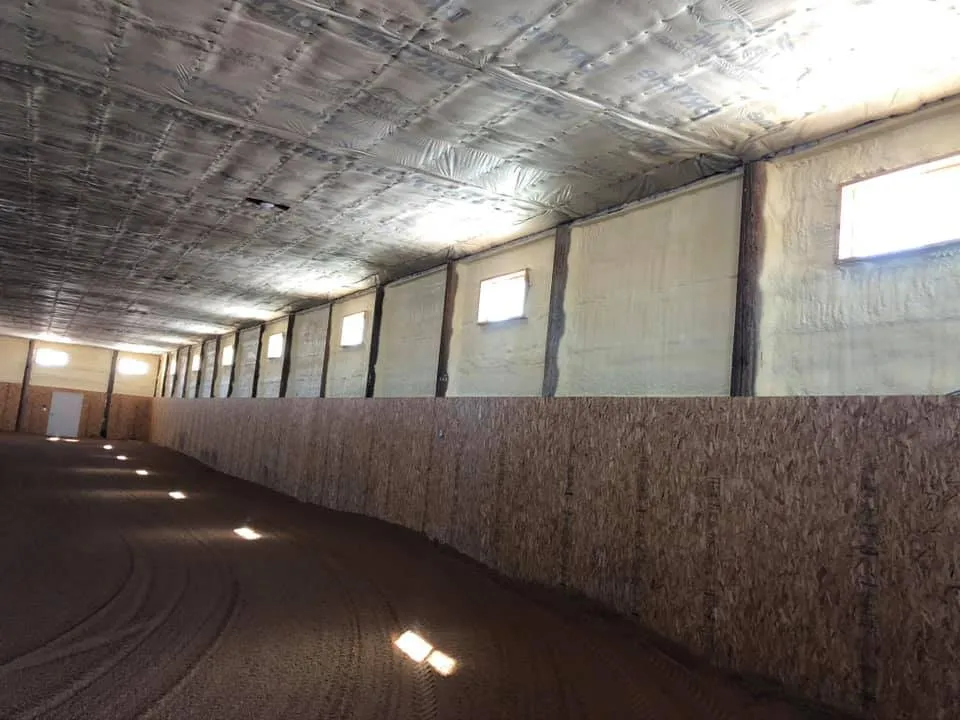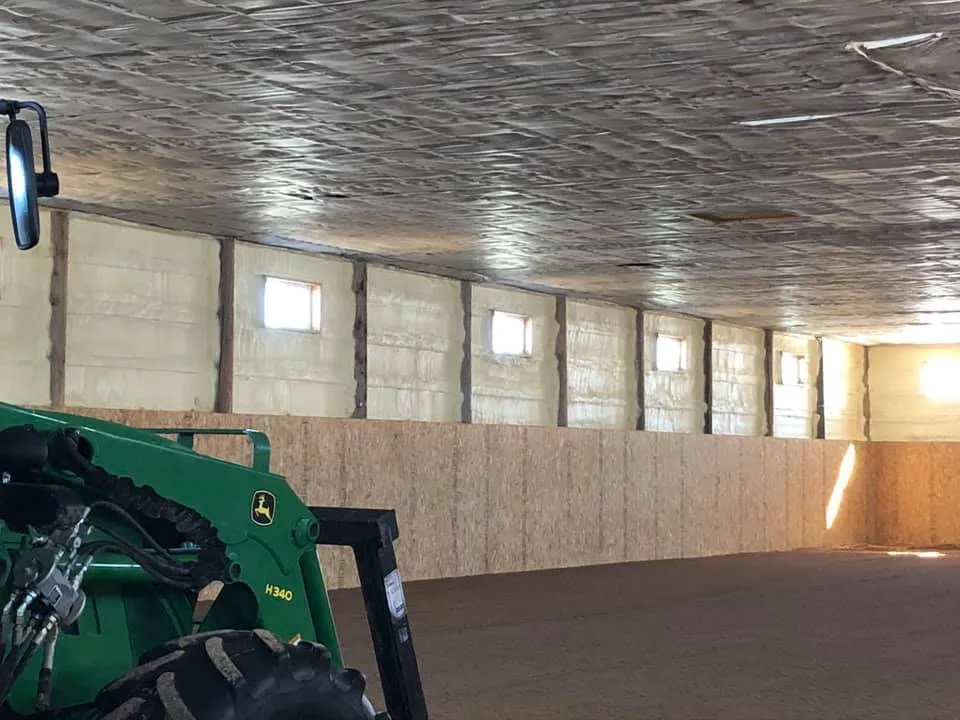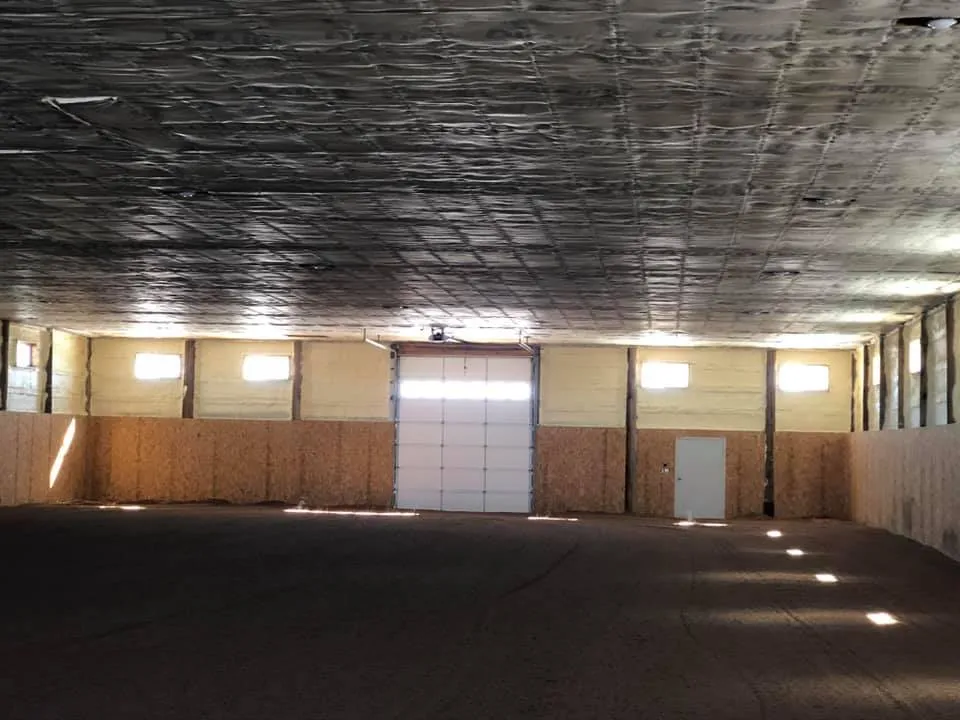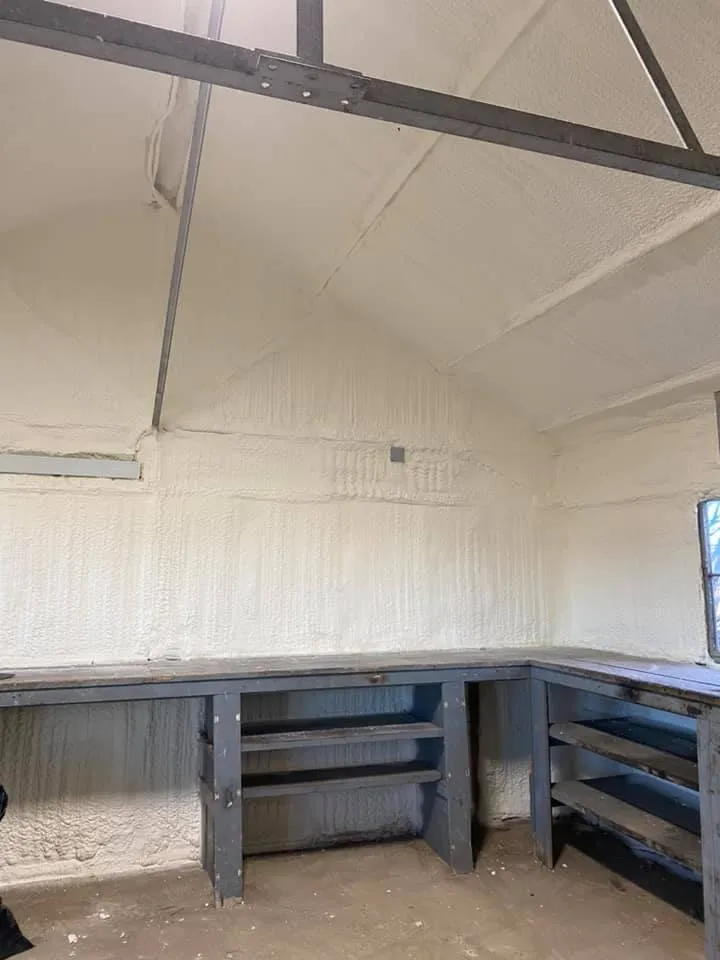

Spray foam insulation offers a high-performance solution for agricultural buildings by creating a continuous thermal and air barrier. This insulation method significantly reduces heat transfer, prevents moisture intrusion, and supports consistent indoor conditions critical for livestock health, crop storage, and equipment longevity.
In agricultural environments, temperature swings, humidity, and air leakage can compromise productivity and structural durability. Spray foam addresses these challenges with its high R-value per inch, superior air sealing capability, and resistance to pests and mold. Its ability to conform to irregular surfaces makes it especially suited for barns, greenhouses, storage units, and processing areas.
| Feature | Open Cell Spray Foam | Closed Cell Spray Foam |
|---|---|---|
| R-Value per Inch | ~3.5 | ~6.0 to 7.0 |
| Moisture Resistance | Low | High |
| Air Sealing Capability | Excellent | Excellent |
| Structural Rigidity | Low | High |
| Cost Efficiency for Large Areas | High | Moderate |
| Best Use Cases | Interior walls, sound dampening | Exterior walls, roofs, high-moisture zones |
Bonus Tip: In humid climates, closed cell foam provides added protection against condensation-related damage in feed storage areas.
| Specification | Open Cell Spray Foam | Closed Cell Spray Foam |
|---|---|---|
| Water Absorption | ~5% to 10% by volume | <1% by volume |
| Permeability | 10+ perms | <1 perm |
| Compressive Strength | ~0.5 psi | ~25 psi |
| Service Temperature Range | -40°F to 180°F | -40°F to 200°F |
| Fire Resistance | Class 1 (ASTM E84) | Class 1 (ASTM E84) |
(Source: ASTM Standards & Spray Polyurethane Foam Alliance)
In cold regions, spray foam’s air-sealing performance reduces heating demand, preventing frost damage to water lines. In warmer, humid areas, closed cell foam controls vapor movement, reducing the risk of mold growth in hay storage or produce coolers. According to USDA building research, improved insulation in agricultural structures can reduce energy costs by up to 40% while maintaining stable environmental conditions.
Bonus Tip: Before installation, check for existing moisture issues—spray foam will seal them in if not addressed.

Yes. Both open and closed cell foam adhere to metal surfaces, reducing condensation risk.
Only if pre-existing moisture is not addressed. Closed cell foam prevents vapor intrusion; open cell allows limited vapor movement.
Yes, with proper equipment adjustments. Closed cell is often preferred for cold-weather installs.
Spray foam insulation provides agricultural buildings with superior energy efficiency, moisture control, and structural benefits. The choice between open and closed cell depends on moisture conditions, structural needs, and budget. Both types support long-term operational efficiency and protection for agricultural assets.
For specialized agricultural insulation solutions, contact High Country Solutions at [email protected] or call (307) 248-9063. Share your building’s specific needs to determine the most effective insulation strategy.
Properly installed spray foam can last 20+ years without performance loss.
No. Its composition does not provide a food source, and it reduces entry gaps.
Yes, if the existing insulation is dry, clean, and structurally sound.
Small areas can be re-foamed; larger damage may require section replacement by a professional.
Direct sunlight degrades foam; protective coatings are recommended for exposed areas.


